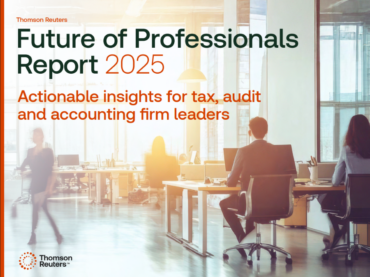As audit firms struggle to keep pace with rising client expectations and market realities, cloud-based audit technology becomes essential.
With both clients and staff demanding anytime, anywhere access and AI-powered technologies now commonplace, today’s audit firms must move fast to adopt cloud technology and use it to their fullest advantage — or risk losing out.
Top challenges for audit firms and how cloud-based audit technology can provide relief

Firms can attract and retaining high quality talent by offering:
- Flexible working arrangements.
- Enhanced collaboration and communication.
- A culture of upskilling and continuous learning.
- The ability to harness AI and data analytics for more meaningful work.

A few ways that a move to the cloud can help alleviate bandwidth constraints include:
- Easily spreading work around to staff in different locations.
- Meeting increasing client demands with fewer staff.
- Offering access to files while onsite or at home.

Here are a few ways that moving data and services to the cloud can help improve security:
- Using thumb drives and other detachable storage devices comes with a variety of risks.
- Loss of a device, file corruption, and other issues are all concerns with the use of physical devices.
- With the cloud, you have access to backup files at any time.

Some examples of the potential boosts to operational efficiency include:
- Sharing data across applications and weeding out tedious, manual tasks – like double data entry – to save precious time and streamline workflows.
- Utilizing assisted decision-making capabilities that proactively access anonymized data from the audit community to suggest areas of risk that may have been overlooked.
- Eliminating over- or under-auditing with risk-based assessments and customized audit programs based on documented risks and assertions.
- Harnessing AI-powered tax research for straightforward answers in everyday language – just as if you were speaking directly to a trusted subject matter expert.

Among those results are:
- Predictive analytics that anticipate potential risks and trends based on historical data.
- Enhanced advisory services and strategic business insights that extend beyond the audit.
- Stronger client relationships and, ultimately, greater profitability.

- Technology Integration: SAS 145 mandates that auditors understand client technology use, especially cloud computing, to ensure thorough financial statement audits.
- Technological Opportunities: The standard encourages using data analytics, AI, and other technologies to enhance risk assessment and auditing efficiency.
- Deeper Insights: These technologies enable auditors to perform data mining and continuous auditing, offering more profound insights into potential risks.
- Future Guidance: Expect new guidance and methodologies by 2025 to align with the SAS 145 quality management standards.
Complete audits in the cloud with absolute confidence
As the world moves towards a more automated and data-driven audit environment, it is becoming increasingly clear that the right tools and technologies can make all the difference in driving efficiencies, increasing confidence, and ultimately, delivering better outcomes for clients.
For more information on how you can upgrade your audit practice, download our white paper, Modernize your audit practice: How AI is shaping the future of auditing.
To learn which solutions in the Thomson Reuters Audit Workflow product suite best align with your business goals and operational requirements, take our 7 question fit assessment.









